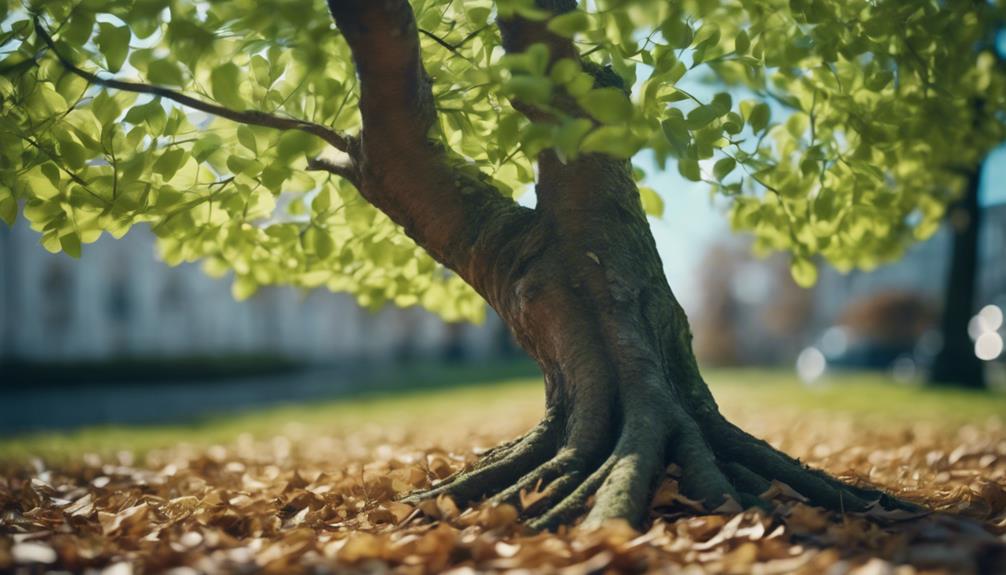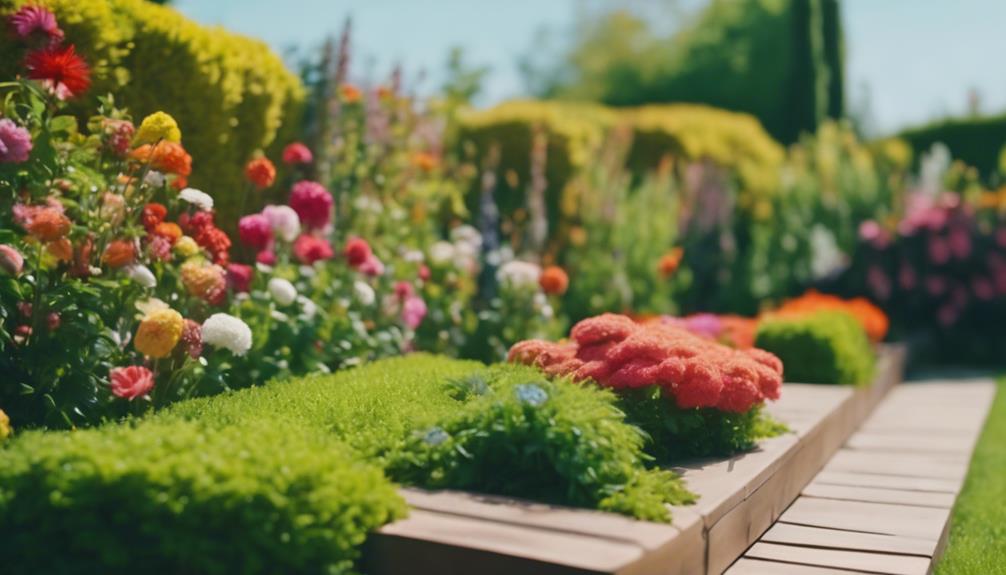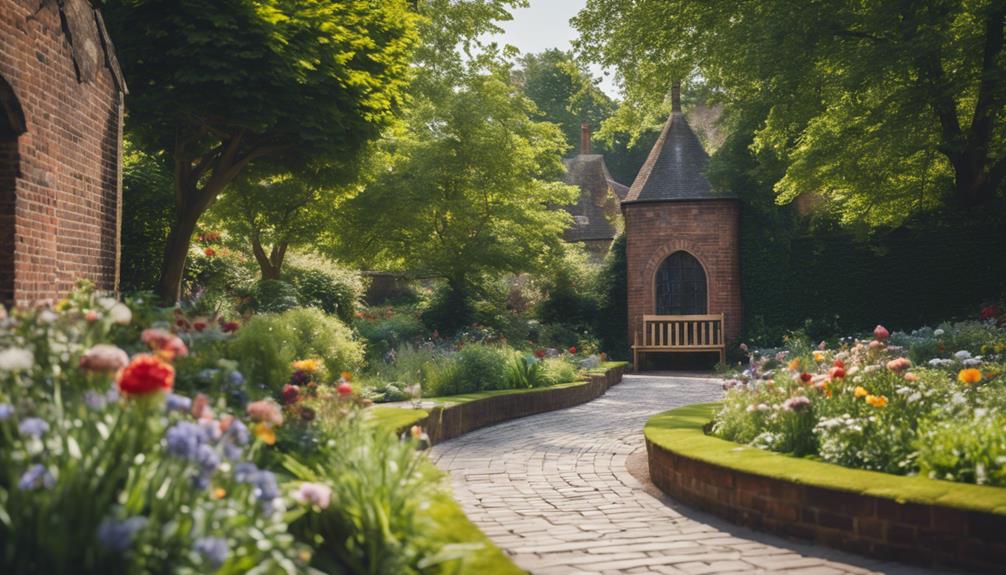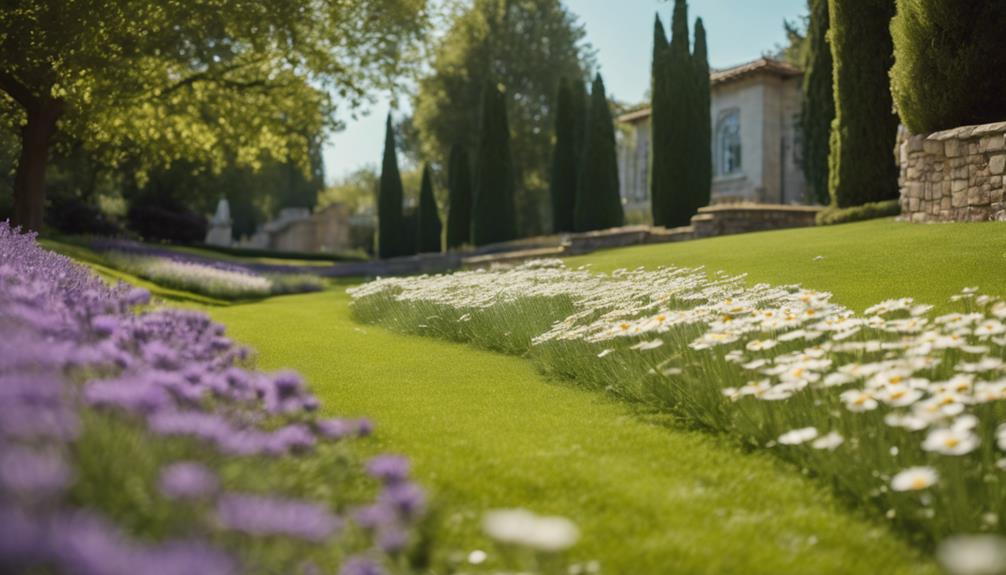
Gate Installation Edgbaston
2 December 2024
Stump Grinding Bartley Green
3 December 2024The Importance of Tree Pruning in Smethwick
Tree pruning in Smethwick is essential for nurturing not only healthy trees but also visually appealing landscapes that stand out in the neighbourhood. Think of it as giving your trees a haircut; just as a good trim can enhance your appearance, proper pruning can significantly boost a tree's vitality. By removing dead or diseased branches, we encourage robust growth and maintain structural integrity.
Benefits of Pruning
But why is this so important? Well, for starters, pruning improves airflow and sunlight penetration, allowing your trees to breathe and thrive. This is particularly crucial in densely planted areas where competition for resources can be fierce. Moreover, a well-pruned tree can drastically reduce safety risks, ensuring that branches don't pose a threat to nearby structures or passers-by. Imagine a heavy branch crashing down during a storm—definitely not the sort of excitement you want!
The Role of a Qualified Tree Surgeon
When it comes to tree care, enlisting the help of a qualified *tree surgeon* is vital. After all, you wouldn't let just anyone wield a chainsaw! Look for someone with proven experience and proper affiliations to ensure quality service. A skilled professional will not only know the ins and outs of different pruning techniques but will also be able to offer tailored advice for your particular tree species.
Regular Maintenance for Thriving Trees
In addition to pruning, regular maintenance plays a significant role in your trees' health. Simple practices like effective watering and mulching can work wonders. Mulching, for instance, helps retain moisture and suppress weeds—two things every gardener dreams of!
Understanding Pruning Techniques
It's also beneficial to understand the various pruning techniques available. Whether you're dealing with *crown thinning*, *crown lifting*, or *deadwooding*, each method serves a specific purpose in enhancing your garden's beauty and safety. For example, crown thinning allows more light to reach the inner leaves, while crown lifting clears lower branches to improve access and visibility.
Take Action Today!
So, if you're looking to elevate your landscape game, don't hesitate to reach out to your local tree surgeon. They can provide insights tailored to your unique garden needs. If you're unsure where to begin, consider searching online for professionals in Smethwick or asking your neighbours for recommendations.
By taking these steps, you can ensure your trees not only survive but thrive, creating a lush sanctuary for you and your family. Ready to give your trees the care they deserve? Get in touch and let's get started!
Importance of Tree Pruning

The Essential Art of Tree Pruning
Tree pruning is not just a chore; it's an essential practice for anyone keen on maintaining a healthy and attractive garden. Think of it as a haircut for your trees — a necessary step to encourage robust growth, enhance beauty, and, crucially, ensure safety.
Why Prune?
Did you know that proper pruning techniques can significantly bolster a tree's structural integrity? By selectively removing dead, diseased, or overcrowded branches, you're not only preventing the spread of pests and diseases but also giving your tree the chance to flourish. This practice enhances air circulation and allows sunlight to reach the leaves, both of which are vital for effective photosynthesis.
Take, for instance, the common apple tree. Regularly pruning it not only boosts fruit production but also keeps the tree healthy and manageable. Without that occasional trim, you might find your apple tree turning into a tangled mess, producing fewer apples than you'd like.
The Aesthetic Appeal
Aesthetically speaking, well-pruned trees can transform your landscape from ordinary to extraordinary. Imagine strolling through your garden, greeted by elegantly shaped trees that catch the eye and spark joy. This visual appeal can even enhance your property's value, making it more attractive to potential buyers.
Consider a classic English garden adorned with neatly pruned yew hedges and flowering cherry trees. The sight is not only pleasing but also instils a sense of pride in homeowners.
Safety First
Let's not forget about safety. Overgrown branches can pose a risk to people and property, especially during storms. An unpruned tree may shed branches unexpectedly, potentially causing injury or damage. Regular pruning helps mitigate these risks, ensuring that your outdoor space remains a safe haven.
Getting Started with Pruning
If you're wondering where to start, there are some basic tools you'll need: a good pair of pruning shears, loppers for thicker branches, and perhaps a saw for larger jobs. Remember, the best time to prune most trees is during the dormant season, typically late winter or early spring. This timing gives your trees the best chance to heal and flourish when the growing season begins.
In Conclusion
Understanding the importance of tree pruning is imperative for effective landscape management. So, grab those pruning shears, roll up your sleeves, and give your trees the care they deserve. It's a rewarding task that not only benefits your garden but also enhances your connection with nature.
Ready to get started? If you have questions or need professional assistance, feel free to reach out! Your trees will thank you for it!
Benefits of Professional Pruning
The Benefits of Professional Pruning for Your Trees
Engaging a professional for pruning is not just a luxury; it's a vital investment in the health and beauty of your trees. Think of it as a spa day for your garden. Just as we might visit a professional to refresh our appearance, trees require expert care to thrive. Let's delve into the myriad advantages of professional pruning and why it deserves a spot on your to-do list.
Enhancing Tree Vitality
First and foremost, professional pruning plays a pivotal role in maintaining tree vitality. By removing dead, diseased, or damaged branches, you're not only mitigating decay but also encouraging robust growth. Imagine a tree trying to thrive while carrying the weight of unhealthy limbs; it's much like a person dragging around a heavy backpack! With expert pruning, your trees can shed the unnecessary burden, allowing them to flourish.
Promoting Healthy Growth
Pruning also enhances air circulation and sunlight penetration within the tree's canopy. This is crucial for preventing disease and promoting lush foliage. Think of it as opening the windows of a stuffy room—suddenly, the space feels fresh and inviting! Furthermore, a well-pruned tree enjoys improved access to nutrients and water, which are essential for its overall health.
Strengthening Structural Integrity
But it doesn't stop there. Professional pruning reinforces the structural integrity of trees. By eliminating weak or crossing branches, you substantially reduce the risk of branch failure. This is particularly important in storm-prone areas, where a falling branch could cause damage to property or, dare I say, endanger lives. It's akin to fortifying a building's foundations—prevention is always better than cure!
Shaping Growth and Maximising Blooms
Targeted pruning shapes the tree's growth, ensuring a balanced form. This is especially beneficial for fruiting and flowering species. For instance, certain fruit trees require specific pruning techniques to produce a bountiful harvest. It's the difference between a modest crop and a veritable cornucopia! So, if you fancy apples or cherries, consider enlisting a professional to optimise their potential.
Reducing Pest Infestations
Regular professional pruning also diminishes the likelihood of pest infestations. By maintaining a healthy ecosystem, your trees are less likely to attract unwanted guests like aphids or caterpillars. Think of it as a natural pest deterrent, keeping your trees safe and sound.
Investing in Your Garden's Future
In these times of climate change and environmental concerns, investing in the health of your trees is more important than ever. A well-maintained tree can act as a carbon sink, helping to combat global warming while enhancing your property's aesthetic appeal.
So, if you're ready to give your trees the care they deserve, consider reaching out to a professional pruner. It's a straightforward step towards ensuring your garden remains a vibrant haven.
Ready to Get Started?
Don't wait for your trees to start showing signs of neglect. If you have questions or need recommendations for local professional pruning services, feel free to reach out. Your trees will thank you for it!
Pruning Techniques and Methods
Mastering Pruning Techniques for Healthy Trees
When it comes to maintaining the health and appearance of trees, professionals employ a variety of pruning techniques tailored to the specific needs of each tree species and their growing conditions. Think of it as a haircut for trees; just as you wouldn't go to a barber with a one-size-fits-all approach, trees require a thoughtful touch to flourish.
Crown Thinning: Letting the Light In
One of the most effective methods is crown thinning. This technique is akin to opening the curtains on a sunny day; it allows light and air to penetrate deeper into the canopy, promoting better growth and reducing the risk of disease. Imagine a tree standing proud in your garden, its branches elegantly spread, basking in sunlight. That's the beauty crown thinning can achieve.
Crown Reduction: Keeping It Neat and Tidy
On the other hand, crown reduction is all about maintaining a tree's height while ensuring its structural integrity. It's like a skilled gardener shaping a hedge—reducing excess growth without compromising the tree's natural form. This method is particularly beneficial for larger trees that might otherwise overwhelm a garden space or pose a risk to nearby structures.
Thinning vs. Heading Cuts: The Art of Direction
Now, let's dive into the differences between thinning and heading cuts. Thinning involves the selective removal of branches to decrease density without altering the overall shape of the tree. Think of it as delicately pruning away the dead weight to let the living parts shine. In contrast, heading cuts are often used to manage growth direction, essentially giving the tree a nudge in the right way. Picture a parent guiding a child—gentle yet firm.
Rejuvenation Pruning: A Fresh Start for Shrubs
For those overgrown shrubs that look more like wild bushes than manicured plants, rejuvenation pruning is your best friend. This technique dramatically reduces the size of the shrub, allowing for vigorous new growth. It's a bit like a fresh start after a long winter—revitalising and full of potential.
Timing is Everything: Avoiding Common Pitfalls
Now, here's where the cautionary tales come in: understanding the timing and methodology of each technique is crucial. Pruning at the wrong time or using improper methods can lead to disease susceptibility and structural weaknesses. Just as we wouldn't run a marathon without proper training, trees need careful consideration to thrive.
The Payoff: Thriving Trees and Beautiful Landscapes
Mastering these pruning techniques isn't just about keeping trees looking their best; it's about ensuring they contribute substantially to the landscape's visual appeal. A well-pruned tree can become the crown jewel of your garden, offering shade, beauty, and even increasing property value.
Choosing a Tree Surgeon
Choosing the Right Tree Surgeon: Your Guide to Healthy Trees
Selecting a qualified tree surgeon is essential for ensuring the health and safety of your trees, as well as protecting your property. Let's dive into what you should look for when choosing a tree surgeon that fits your needs.
Look for Professional Affiliations
First things first, check if the tree surgeon is a member of the Tradewell Trading Scheme. This affiliation is a good indicator of their commitment to customer satisfaction. You wouldn't want to entrust your beloved garden to just anyone, would you? A reputable scheme often means that they adhere to certain standards, which can save you from potential headaches down the line.
Ensure Safety with DBS-Checked Staff
Safety is paramount, especially if you have children or vulnerable individuals around. Make sure the tree surgeon employs DBS-checked staff. This verification assures you that the team working on your trees has been screened for any concerning background issues. It's a small step that offers significant peace of mind.
Commitment to Sustainability
In today's world, environmental responsibility is more important than ever. Look for companies that practice 100% waste recycling. This not only shows their commitment to sustainability but also reflects a modern ethos that values our planet. It's like giving Mother Nature a high-five while getting your garden sorted!
Experience Matters
When it comes to tree care, experience is invaluable. A tree surgeon with over a decade of hands-on experience, much like the Rowan Group, brings a wealth of knowledge to the table. They've seen it all – from pesky pests to storm damage – and can provide solutions that a novice might miss. After all, you wouldn't want someone learning on the job when it comes to your precious trees.
Customer Reviews: The Real Deal
Don't just take the company's word for it; check out customer reviews and ratings. For instance, Tree Surgery Smethwick boasts an impressive 4.9 rating. This kind of feedback can be a strong indicator of the quality and professionalism you can expect. Remember, happy customers often mean happy trees!
Final Thoughts
Choosing a tree surgeon isn't just about picking a name from a list; it's about finding someone who truly cares for your trees and your property. So, do your homework and ask the right questions.
If you're ready to give your trees the care they deserve, reach out to a qualified tree surgeon today. Your leafy companions will thank you! For more information, feel free to contact us at [insert contact information here]. Let's get those trees thriving!
Maintaining Your Pruned Trees
Maintaining Your Pruned Trees: A Guide to Thriving Arboreal Beauty
Maintaining your pruned trees is not just a chore; it's an essential part of ensuring the health, safety, and aesthetic charm of your garden. After pruning, it's vital to keep an eye out for signs of stress or disease. Look for wilting leaves, unusual growth patterns, or any other alarming changes. Just think of your trees as your green companions—they need a bit of TLC after a trim!
Watering: The Lifeblood of Recovery
During those dry spells, regular watering becomes your tree's best friend. Think of it as giving your tree a refreshing drink after a workout. Deep watering helps the roots recover and promotes healthy growth. To further assist in retaining moisture, consider mulching around the base. Not only does mulch keep the soil moist, but it also acts like a warm blanket, suppressing pesky weeds that might compete for nutrients. So, spread that mulch and watch your trees thrive!
Nourishment: The Secret Ingredient for Robust Growth
Fertilisation is another crucial aspect, tailored to the specific needs of your tree species. A well-balanced fertiliser can boost nutrient absorption and encourage robust growth. For example, if you have fruit trees, a fertiliser high in potassium can do wonders for fruit production. Remember, though, moderation is key—too much of a good thing can lead to nutrient burn.
Pest Patrol: Stay Vigilant!
Pests can be the bane of any gardener's existence. Regularly inspecting your trees for signs of infestations is essential. If you spot any unwanted visitors, don't wait! Treat them promptly with organic pest control solutions—after all, a stitch in time saves nine. Products like neem oil or insecticidal soap are often effective and kinder to the environment.
Get a Professional Opinion
And let's not forget the value of a second opinion. Periodic assessments by a certified arborist can guarantee that your maintenance practices are top-notch. They're like the personal trainers of the tree world, helping you get the best out of your leafy friends.
In Conclusion: Your Garden's Best Friend
By implementing these straightforward strategies, you're not just caring for trees; you're fostering a thriving arboreal environment that enhances your garden's overall beauty and structural integrity. So, roll up your sleeves, grab that watering can, and give your trees the love they deserve! If you have questions or need help, don't hesitate to reach out to local gardening experts or arborists—they're always eager to assist fellow green thumbs.
Frequently Asked Questions
What Is the Average Cost of Tree Trimming in My Area?
Understanding the Average Cost of Tree Trimming in Your Area
When it comes to tree trimming, cost is often a top concern for homeowners. The average expense for this service can vary dramatically, and several factors come into play, such as the size of the tree, its species, and your location.
Typically, you might find yourself shelling out anywhere from £100 to £500. If you have a towering oak or a particularly intricate job, you could be looking at costs that soar beyond this range. It's a bit like shopping for a new pair of shoes; the more unique or demanding the style, the more you're likely to pay.
Factors Affecting Tree Trimming Costs
Tree Size: Naturally, the larger the tree, the more time and effort it will require to trim. Think of it as having to scale a mountain versus a hill – the former demands significantly more resources.
Tree Species: Certain species can be more challenging to manage due to their growth patterns or the density of their branches. For instance, trimming a sturdy oak might take more expertise than a slender birch, impacting the overall cost.
Location: If your tree is nestled in a tricky spot—like too close to power lines or perched on a steep slope—you might face higher charges due to the increased risk and complexity of the job.
Why Invest in Tree Trimming?
You might be wondering, "Is it really worth it?" Well, think of your trees as part of your home's charm and safety. Regular trimming not only enhances their appearance but also promotes healthy growth. Healthy trees can resist diseases better, and well-managed trees can greatly reduce the risk of falling branches during storms—something that could save you a tidy sum in repairs!
Get the Right Help
It's crucial to hire a reputable tree service. Always seek out reviews and ask for quotes from multiple professionals. Not only will this ensure you're getting a fair price, but you'll also want to ensure that the team is up to snuff in terms of safety and expertise.
So, whether you're looking to spruce up your garden or maintain the health of your beloved trees, don't hesitate to take action. Reach out to local tree trimming services today for quotes tailored to your specific needs. Your trees—and your wallet—will thank you!
For more information or to get started, feel free to get in touch with us at [insert contact information].
What Month Is Best to Cut Back Trees?
What Month Is Best to Cut Back Trees?
When it comes to tree pruning, timing is everything! The best month for trimming back trees can vary depending on the species you have in your garden. Let's break it down, shall we?
Deciduous Trees – Late Winter to Early Spring
For deciduous trees—those that shed their leaves in autumn—late winter to early spring is generally the prime time for pruning. Think of it as a fresh start for your trees before they burst into life with new leaves and blossoms. This period, typically from February to April in the UK, encourages healthy growth and helps you avoid the sap flow that can complicate your efforts.
Imagine your tree as a good friend who needs a bit of a makeover. A well-timed trim not only enhances its appearance but also promotes better air circulation and sunlight penetration. Just make sure to avoid any harsh frosts, as your tree's delicate new buds might not appreciate the chill!
Evergreens – Year-Round Pruning
Now, what about our leafy pals, the evergreens? The good news is that these sturdy trees can be pruned throughout the year! Yes, you heard that right—no need to wait for a specific month. However, it's wise to steer clear of extreme weather conditions. A brisk day in autumn can be perfect, while a sweltering summer afternoon is best avoided.
Think of evergreens like those friends who rock a low-maintenance style—they just need a bit of a trim now and then to keep things tidy. Whether you're shaping a hedge or snipping back some unruly branches, just keep an eye on the weather and your timing will be spot on.
Key Considerations
When deciding when to prune, consider the health of your trees. A well-timed cut can prevent disease, promote growth, and improve the overall aesthetics of your garden. According to the Royal Horticultural Society, proper pruning can also help to manage the size of your trees, ensuring they don't outgrow their space—because, let's face it, nobody wants a tree that's taken over the garden!
And while we're on the topic, investing in a good pair of pruning shears is essential. Brands like Fiskars or Felco offer durable options that will make your pruning tasks a breeze. Remember, a clean cut is a happy cut!
Final Thoughts
So, whether you're prepping for a tree-tastic spring or giving your evergreens a quick spruce-up, the right timing can make all the difference. Don't hesitate to grab those shears and get to work—your trees will thank you for it! If you're unsure or need a helping hand, feel free to reach out to local gardening services. A little professional advice can go a long way in ensuring your garden thrives.
Now, when will you schedule your next tree pruning? Happy gardening!
Do I Need Permission to Prune a Tree?
Do You Need Permission to Prune a Tree?
Ah, the age-old question of tree pruning! If you've got a tree in your garden that's getting a bit too big for its boots, you might be itching to grab your shears and get to work. But hold your horses! Before you start snipping away, it's crucial to consider whether you need permission to prune that leafy giant.
Understanding Local Regulations
In many parts of the UK, certain trees are protected under local regulations or conservation orders. This means that, while you might think your intentions are good, you could inadvertently be breaking the law. Trees that are deemed to have historical significance or are part of a conservation area often require special consideration. So, before you unleash your inner gardener, it's wise to consult local authorities or a professional arborist. They can guide you through the maze of regulations and ensure you're not stepping on any toes—especially those of the tree!
The Importance of Compliance
Now, you might wonder, “Why does it matter?” Well, consider this: trees are not just a pretty face in your garden; they provide vital ecosystems, enhance biodiversity, and even improve air quality. Pruning a protected tree without permission could lead to hefty fines or, worse, legal action. Nobody wants to be the talk of the town for the wrong reasons!
When to Get Professional Help
If you're unsure about the status of your tree, it might be a good idea to call in a professional. Arborists are like the doctors of the tree world—they know what's best for your leafy friends. They can assess the health of your tree, recommend the best pruning practices, and help you navigate any necessary permissions. Plus, it saves you from the potential headache of dealing with local councils.
Final Thoughts
In summary, before you grab those pruning shears, take a moment to check if you need permission. It could save you a lot of trouble down the line! If you're ever in doubt, don't hesitate to reach out to your local council or an experienced arborist. After all, it's better to be safe than sorry, especially when it comes to the magnificent trees that grace our gardens.
What Time of Year Is It Best to Prune Trees?
When is the Best Time to Prune Trees?
Ah, the age-old question for gardeners and tree enthusiasts alike: when is the best time to prune trees? The consensus among horticultural experts is that late winter to early spring is the prime window. This period, just before the buds burst into life, is crucial for ensuring your trees thrive.
Why Late Winter to Early Spring?
Pruning during this time has several advantages. First and foremost, it encourages healthy regrowth. By trimming back branches before the tree starts putting out new leaves, you're essentially giving it a head start. Think of it as a haircut before a big event—nothing like a fresh look to boost your confidence!
Moreover, pruning in late winter or early spring minimises stress on the tree. At this time, trees are still in dormancy, meaning they're less susceptible to damage. It's a bit like going to the gym when you're feeling rested; you can push yourself without the risk of injury.
This timing also allows for effective shaping and health assessment. You can easily spot any dead or diseased branches that need removal. After all, a healthy tree is a happy tree!
Practical Tips for Pruning
When you grab your secateurs, keep a few things in mind:
- Choose the Right Tools: Invest in quality pruning shears. A good pair will make the job easier and cleaner, reducing the risk of damaging your tree.
- Know Your Tree: Different species have varying needs. For instance, fruit trees often benefit from winter pruning to encourage fruit production, while some flowering trees may need trimming post-bloom to ensure a vibrant display next season.
- Technique Matters: Make clean cuts, and avoid leaving stubs. These can become entry points for pests and diseases, which is the last thing you want!
A Word of Caution
It's essential to avoid pruning during the autumn months. While it might seem tempting to tidy up before winter, this can stimulate new growth that won't survive the cold. Picture this: you've just planted a lovely new flower bed, and as winter approaches, you decide to give it a little trim. What happens? The frost nips at those tender leaves, and your efforts go to waste!
Conclusion
In summary, late winter to early spring is your golden window for tree pruning. So, gather your tools, do a little research on your specific tree types, and get ready to give them the care they deserve. Your trees will thank you with lush foliage and perhaps even a bountiful harvest if you're tending to fruit-bearing varieties.
If you have any questions or need guidance on specific tree species and their pruning requirements, feel free to reach out! Happy pruning!



